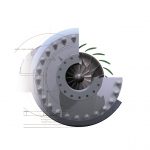 By Matt Davis
By Matt Davis
Understanding and following the key steps in creating and manufacturing is probably the most important effort that you can make to give your product a better chance of success, and give yourself more confidence that you won’t make a mistake early — or late — in the process that can end up costing you even more money. Here, we’ll review those steps, and talk about why they’re important — and where you can get tripped up if you don’t follow them.
-Come up with an idea. The first step in your process. Even at this early stage, be sure to think about the key details of your product: the who (who will you sell to?), the what (what exactly is your product, what will it do, and what problems will it solve?), the how (how will you fund the creation of your product), and more. Overlooking any of these key elements early on could lead to big problems later.
-Test at home. Talk to friends and family about your idea, and be open to constructive input. Getting a more objective perspective at this stage can help you be more realistic and adaptive throughout the entire production cycle. You don’t want to realize once you’ve started prototyping that there’s a similar product out there, or that most people don’t understand what your product does.
-Have your idea made into CAD files. If you have the know-how, you can do this yourself, or have an industrial design professional assist. You’ll also want to look into a provisional patent at this point. A CAD drawing will form the basis of your actual product manufacturing, so you’ll want to make sure it’s done right (and that your idea is protected with a patent).
-Have your product prototyped. Decide between rapid prototyping or a process like CNC machining, and choose a manufacturing partner to create these “test” versions of your product. Making changes during the prototyping phase is essentially infinitely more cost-effective than realizing the need for them during or after production.
-Product testing and UL certification. Here, you can make sure not only that your product works correctly, but that it works safely (if, for instance, it involves electronics or poses a potential harm to the user if it malfunctions). If you are found liable for injuries caused by your product, and it hasn’t been properly testing or certified, you are subject to lawsuits and/or fines.
-Manufacturing. Choose the right process and manufacturing partner for you, your product and your budget. Be sure to understand the pros and cons of the various processes available to get the most out of your production investment. Now is also a good time to think about how you’ll inventory your product, so you’ll know what to do with it once your shipments start arriving.
-Distribution. Will you sell directly to consumers (say, if you’ve done a crowdfunding campaign)? What types of stores will you distribute to, and in what regions? Addressing these concerns earlier rather than later allows you more time to research, negotiate and make informed, confident decisions in how exactly your product will get into customers’ hands.
-Grow your business. Monitor your sales and costs, and set benchmarks: when will you invest more, say in marketing or sales? Once your profits start to level out, you’re likely to see a peak soon (followed by a drop-off). This is a normal part of manufacturing and sales, but you need to be ready: Decide whether you’ll upgrade your product or start creating a new one, for example.
-Improve your idea and update your product. Here is where some of your biggest potential for growth lies. As mentioned above, being prepared for this stage will let you put the proper thought and investment into your next steps, on your own terms — not scrambling to make up for a sales drop, for example, or rushing into new product development.
Remembering these steps (and potential pitfalls) gives you a useful set of tools to make your development and production process run as smoothly as possible, which is also a great way to manage your costs and bottom line.
Want more information on manufacturing mistakes to avoid? Check out the valuable resource from RevPart at the link below.
______
Author bio: Matt Davis is an experienced product design engineer and design guru in plastic injection molding at RevPart — a custom rapid prototyping and 3D printing services company.
